
Getty Images; Shutterstock/E! Illustration
The popularity of professional wrestling is undeniable.
Millions of fans look forward to annual extravaganzas like WrestleMania and pack arenas to see their favorite heroes and villains go at it in the ring. Since its debut in 1985, Wrestlemania has featured appearances by everyone from Aretha Franklin and Muhammad Ali to Pamela Anderson, Kid Rock and the current president of the United States, who’s a long-time friend of World Wrestling Entertainment owner Vince McMahon. Fox signed a $1 billion, five-year deal with the WWE for rights to air Smackdown starting this fall.
The WWE (previously the WWF) has also proved an impressive launchpad for stardom outside the ringt, too, with WWE icon Dwayne “The Rock” Johnson now one of the highest-paid actors in Hollywood, Dave Bautista a beloved member of the Marvel Universe and John Cena proving he’s a comic heavyweight, too, in movies like Trainwreck and Blockers. On the flip side, after retiring from UFC, Ronda Rousey is now enjoying a second chapter as a WWE star.
But also deniable is the fact that wrestlers, no matter how staged or carefully choreographed the action is, put their bodies at risk every time they enter the ring—as many athletes do, only with the guarantee that they’ll be doing outrageous stunts.
Owen Hart was 33 when he died after an equipment malfunction caused him to fall 78 feet during his ring entrance during WWF’s Over the Edge pay-per-view event in 1999. The WWF settled a lawsuit filed by the family for a reported $18 million in 2000. Meanwhile, the show had continued, and when it was re-aired for the first time 15 years later on the WWE Network, Owen was entirely edited out of the broadcast.
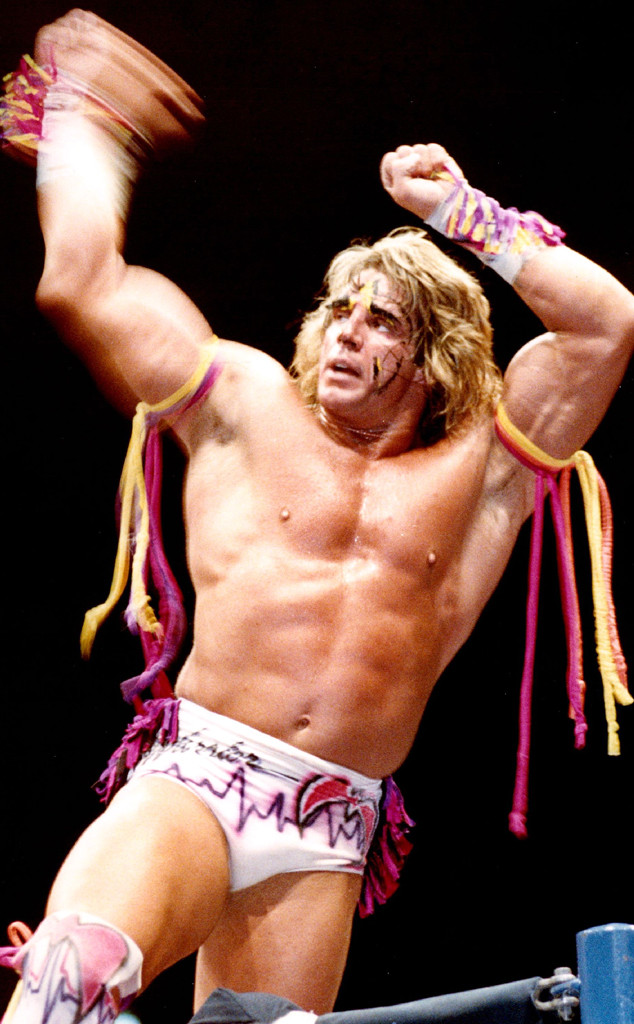
The Denver Post via Getty Images
To be sure, Hart’s fatal accident during a live show was a freak occurrence, but injuries are a given.
Last year, speaking as part of the Lakers Genius Talks series, where the L.A. Lakers have superstars from different industries come speak, Johnson recalled powering through the most heinous injury of his career while battling Cena during WrestleMania 29 in 2013.
“At the 15-minute mark, ‘bang!’ I feel something pop and I’m like ‘What the f–k?'” the Hobbs & Shaw star recalled. “I’m laying there and both of us are out. I said ‘Oh f–k, something is going on.’ 85,000 people and I sort of roll over and stick my hand down in my trunks because I wanted to make sure no bone was sticking out.”
With no bone sticking out and having a split-second to decide, Johnson of course kept going.
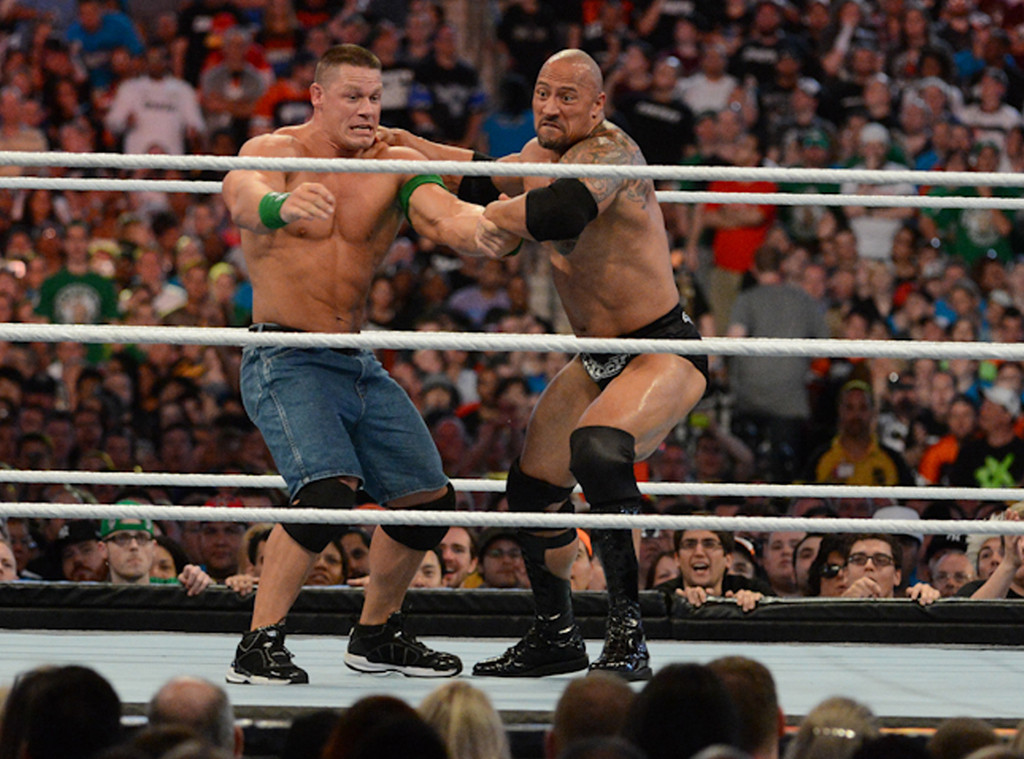
Ron Elkman/Sports Imagery/Getty Images
“In the world of wrestling, when you have a big show like this, a big main event that the entire show is based around,” he explained. “The wrestlers will come up to the two people in the main event, at some point, all throughout the night in the locker room and be like, ‘Hey, thank you for the house.’ What that means is thank you for drawing—helping draw 85,000 people—and putting a lot of f–king money in my paycheck. We got a lot of ‘Thank you for the houses’ that night.”
The Rock is obviously one of the biggest success stories in Hollywood. But the pain that many wrestlers suffer through over the course of their careers, and the things they do to deal with the pain, can’t help but overflow into their lives outside the ring.
When Mickey Rourke played Randy “The Ram” Robinson, a broken-down onetime star with a personal life in shambles, in Darren Aronofsky‘s 2008 film The Wrestler, he said at the time that he didn’t base the whole of his character on a real-life wrestler, but there was a persistent rumor that The Ram was inspired by Jake “The Snake” Roberts, who battled substance abuse during and after his ’80s-’90s heyday and ended up estranged from his kids.

Saturn/Kobal/Shutterstock
“That is kind of a myth that the movie is based on Jake Roberts,” producer Evan Ginzburg told Wrestle Zone in 2018. “What happened was I took Darren Aronofsky and the executive producer, the money guy, and the screen writer to a convention. At the convention there were probably 20 wrestlers: Albano, Moolah, Mae Young, Iron Sheik, Nikolai Volkoff and so on and… there was nobody there. It was sad. There was like, literally, a dozen or two dozen people there. There was probably more wrestlers than fans. Iron Sheik’s head was down on the table sleeping, literally sleeping in the middle of all of it. We just saw some very sad things along the way.”
“It’s sad to say what has happened to Jake is not that original a story for pro wrestling,” Aronofsky said on NPR’s Day to Day in 2009. “We met so many guys who had similar journeys, who were big stars and just didn’t take care of themselves and ended up in really, really terrible situations.”
Ultimately, Randy the Ram “was a composite,” Ginzburg told Wrestle Zone.
“Darren respected them as performers, artists and athletes,” he continued, “but he wanted to tell the true story about how these guys generated millions but they don’t have millions for the most part. It’s the same in [the wrestling documentary] 350 Days. The promoter gets the lion’s share.”
On March 31, Last Week Tonight With John Oliver featured a segment lambasting the WWE, and Vince McMahon particularly, for exploiting the talent, physically and financially.
“Many fans legitimately hate him because while the WWE has made him a billionaire, many wrestlers say he’s treated him terribly,” Oliver said.
In 2015, an average contract paid $500,000 a year, with top deals going into the seven figures. The wrestlers are considered independent contractors as opposed to full-time employees and, while the WWE will cover 100 percent of the cost of any work-related injury and subsequent rehabilitation, wrestlers are responsible for getting their own insurance.
“Anyone who makes the kind of money that they make can easily afford their own healthcare,” McMahon told the Connecticut Post in 2010. “Most independent contractors have their own healthcare.”
Featured in the Last Week Tonight piece was WWE Hall of Famer Bret “Hit Man” Hart (who, incidentally, Evan Ginzburg referred to last year as one of the wrestlers “who did do well” financially, as opposed to some), who said, “All these wrestlers that have broke their backs making this living for years end up with nothing when it’s over, and then they sort of take you out back and they put a slug in the back of your head and dump you out in the—,” he paused. “But that’s the life of a professional wrestler.”

MediaPunch/Shutterstock
Bret, 61, and Owen Hart were among the 11 children of late professional wrestler Stu Hart and his wife, Helen. (Stu, incidentally, lived until he was 88.) All of the seven brothers either wrestled or were involved backstage, and their four sisters married pro wrestlers. Bret’s 2007 autobiography Hit Man: My Real Life in the Cartoon World of Wrestling utilized hours upon hours’ worth of audio diaries he kept during his pro career, which started in the late ’70s. He worked on it for years, getting waylaid by a stroke he suffered in 2002 following a bicycling accident.
Hart’s had a tumultuous relationship with the WWE, which he left in 1997 (when it was still WWF) for the rival World Championship Wrestling. Hart officially retired in late 2000 but returned to be inducted into the WWE Hall of Fame in 2006, and then again this year with his team, The Hart Foundation. (WCW folded in 2001 and McMahon eventually bought the rights to its archive.)
Hart told A.V. Club in 2009 that he didn’t miss the physical act of wrestling in the least, but he missed the camaraderie and the fans. Asked about what was then the recent movie The Wrestler, he said he thought the acting was great, but it chose to focus on one particular perspective.
“When I watched it, as good as the acting and story was, I thought that people would think there was no high end or reward,” Hart said. “There’s a lot of better stories. Wrestling was a good life for me. I had some bad things happen, but the truth is, I had a great time.”

Rmv/Shutterstock
Meanwhile, the WWE slammed Oliver’s report as inaccurate and invited him to WrestleMania 35 the following weekend to see for himself what sort of operation they were running. He didn’t attend, but at the end of his own show he ran a clip of an old wrestling commercial spliced with a voice encouraging whoever gathered at 82,500-seat MetLife Stadium next Sunday to chant in favor of the talent’s access to retirement accounts, worker’s comp and family and medical leave.
“I’m not saying the fans should do that, or make signs, or make lots of signs. I’m just saying, I really hope they make their voices heard on this,” Oliver urged.
While the Last Week Tonight segment was wildly applauded by some, especially by those who have no interest in wrestling whatsoever, the reaction was mixed in the community, with lots of outrage coming from online pundits but the stars themselves sounding more measured.
“Everybody’s entitled to their own opinion,” Paul Wight, the WWE star known as Big Show, told TMZ Sports after Oliver’s piece aired. “Everybody’s got their own experiences and how they feel. I’ve had a hell of a career. I’ve had a lot of injuries. I knew from day one, stepping through the ropes, that it was not an easy job, it was a job that I was going to put myself at risk. And, you know, I took the paychecks, I took the fame, I took the fortune, and those are the risks that happen.
“That’s just part of the industry, and the industry’s changed,” he added. “It’s done everything it can to protect the athlete and create longevity for the athlete. I’m 47! I’m still rockin’ and rollin’. They’re doing something right!”
“Prior to airing, WWE responded to his producers refuting every point in his one-sided presentation,” the WWE also stated. “John Oliver simply ignored the facts. The health and wellness of our performers is the single most important aspect of our business, and we have a comprehensive, longstanding Talent Wellness program.”
The WWE implemented its wellness program in February 2006, several months after star Eddie Guerrero died suddenly of heart failure at 38 after years of drug abuse. It includes cardiovascular and brain function testing, as well health care referrals and drug testing (for recreational substances) to ensure that wrestlers are in compliance with a Wellness Policy.
Yet there remains an eerily long—and growing—list of former wrestlers who didn’t make it out of their 30s and 40s, let alone their 50s and 60s, and not including sad accidents such as what happened to Owen Hart.
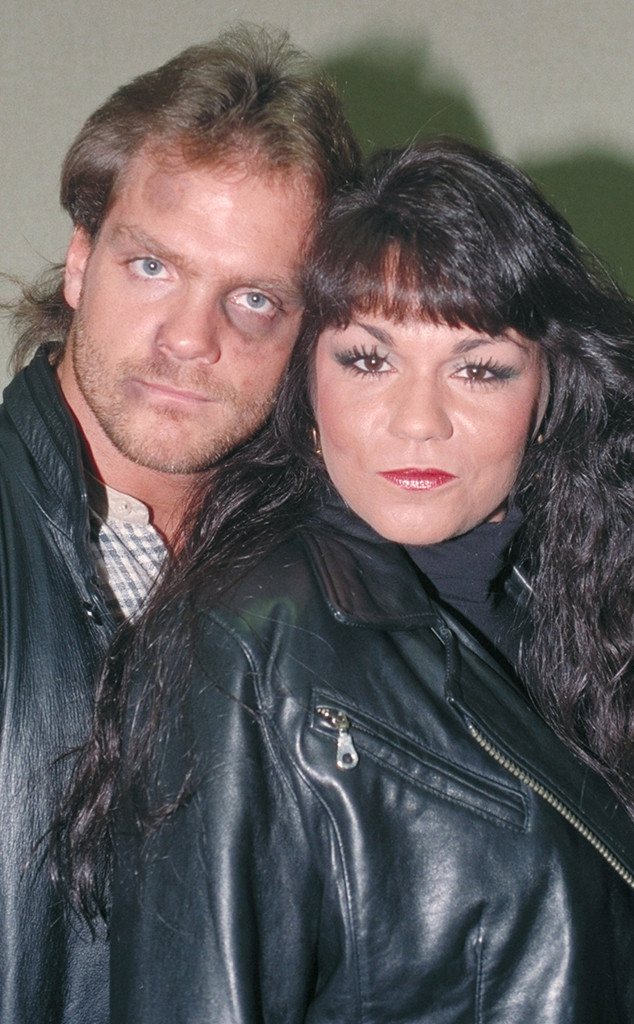
George Napolitano/FilmMagic
In 2007, Chris Benoit, a world champion in WWE and the competing WCW, killed his wife, Nancy, and 7-year-old son before hanging himself at their Georgia home, a stomach-churning tragedy that unfolded over what authorities determined was a three-day period. He had been scheduled to compete for a third world championship on June 25, the day their bodies were discovered, on Raw; the event was canceled and a three-hour retrospective on Benoit’s life and career ran in its place.
Once more details about the murder-suicide started to come out, however, the WWE clamped down on official mentions of Benoit at events and started to erase him from their archives.
Benoit’s death prompted a renewed discussion about the long-term effects of steroid use and repeated head injuries; it was later reported that the 40-year-old’s brain resembled the brain of an 85-year-old with dementia. He was also said to have been devastated by Guerrero’s death in November 2005 and had been acting erratically, not just for weeks or months, but for the last couple of years of his storied career.
At the same time, some of Benoit’s fellow wrestlers refused to believe he killed himself or anyone else, that he had been just fine the last time they saw him, and conspiracy theories that he had been murdered along with his family linger.
Chyna, once the biggest female star in wrestling and dubbed the “Ninth Wonder of the World” before the WWE released her in 2001, died of an accidental overdose of prescription drugs and alcohol in 2016. She was 45.
In the last decade of her life she was still a popular figure in the wrestling world, and fans went nuts when she made her debut for Total Nonstop Action Wrestling on Impact! in 2011. But she also became known for releasing a couple of sex tapes and doing porn, saying that she found her adult-entertainment family more welcoming than the women around her in her wrestling days. Though she always denied having an addiction problem, she admittedly used drugs and appeared on Celebrity Rehab With Dr. Drew in 2008. In 2015 she revealed on Opie and Jim that she had attempted suicide before and been hospitalized for mental health issues.
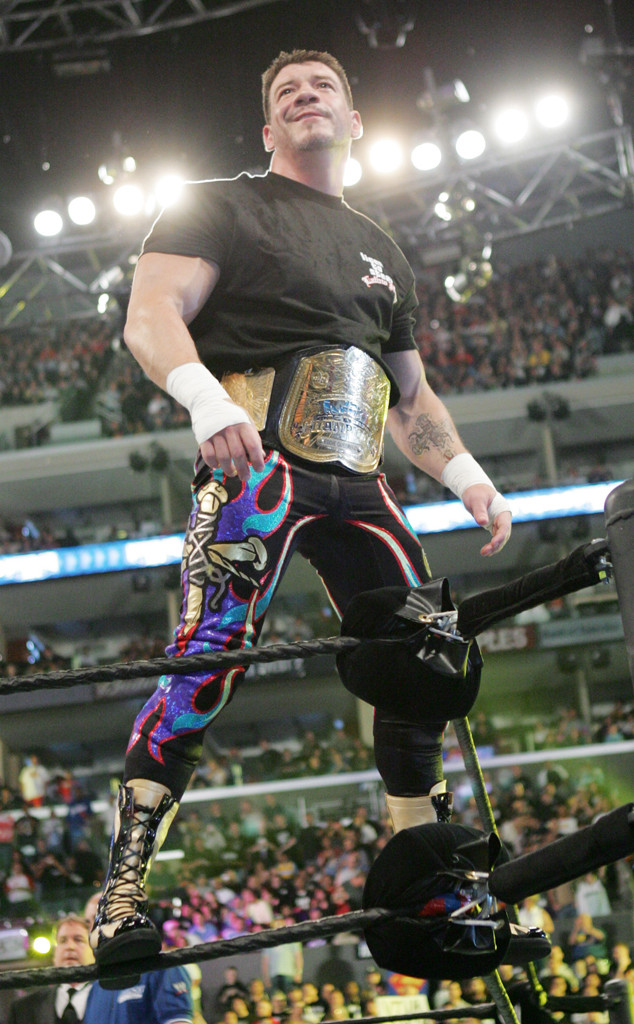
John Shearer/WireImage for BWR Public Relations
Accidental prescription drug overdoses also caused the deaths of 43-year-old Brian “Crush” Adams, whose 7-year-old son found him unconscious in bed in 2007; 33-year-old Andrew “Test” Martin, who OD’d on oxycodone in 2009 and was later found to have severe chronic traumatic encephalopathy (CTE), which is linked to repetitive head trauma; and 29-year-old Lance McNaught, who died of heart failure triggered by mixed drug intoxication, in August 2010.
McNaught, who wrestled as Lance Cade, had been fired from the WWE at least twice for substance abuse-related issues, first in 2008 after five years under contract and again in April 2010. The WWE paid for his first trip to rehab, according to Deadspin, but he was let go the second time after admitting to drug use and returning to treatment. Months before he died he called the WWE’s Wellness Policy a PR move, rather than an attempt to really help the talent.
“Vince’s stance [is] they do all this because they care about the talent,” McNaught told manager Kenny Bolin, host of The Bolin Alley podcast, in April 2010. “Bulls–t. They care about the image of the WWE and you care about the fact that Congress was having…hearings about this. That’s what this comes down to.”
Lance’s father Harley McNaught told Connecticut’s The Day that his son had started abusing painkillers after suffering a knee injury and receiving a prescription in 2004. He had undergone surgery on a busted shoulder in 2008 as well.
“It hurt me to see him wrestling in pain,” Harley McNaught said, “but you talk to any one of them, once you try to climb the ladder and get a spot, you shut it down [due to an injury] and you lose your spot and go right back to the bottom. So it’s, ‘Here, take a few painkillers, make the world go away.'”
Talking to the Commission on Oversight and Government Reform as part of a 2008 congressional investigation into drug use in professional wrestling in the wake of what happened with Chris Benoit, when asked why the WWE had started offering to help current and former talent obtain treatment, McMahan said, “Two words. Public relations. That’s it. I do not feel any sense of responsibility for anyone of whatever their age is who has passed along and has bad habits and overdoses for drugs. Sorry, I don’t feel any responsibility for that.”

Jim Spellman/WireImage
“I might have met him once,” Vince’s wife, Linda McMahon, who had previously been WWE CEO and at the time was a Republican candidate for the U.S. Senate in Connecticut, told the Connecticut Post when asked about McNaught’s death. She said that the WWE could no more be held accountable for what happened to McNaught “than a studio could have prevented Heath Ledger‘s death.” (Mrs. McMahon lost to Democratic Sen. Richard Blumenthal; more recently she served as head of the Small Business Administration under President Trump before stepping down in April.)
Before McNaught’s death, Eddie “Umaga” Fatu, 36, was released from his WWE contract in June 2009 for violating the Wellness Policy for not the first time and refusing to go to rehab; he died that December from a combination of acute toxicity (from painkiller hydrocodone, muscle relaxer carisoprodol and anti-anxiety drug diazepam), heart disease and liver failure.
Chris Kanyon had threatened suicide in the weeks prior to his brother finding him dead in his New York apartment on April 2, 2010, next to an empty bottle of antidepressants. He was 40.
“Everybody already knows that if you get hurt, you know, work through it because you’ll lose your spot,” Lance McNaught told wrestling newsletter PWInsider. “…You know, guys don’t set out to do this, they don’t set out to be problem-makers, most of them at least. You know, and I don’t want to be a part of a company that says one thing and then does another, especially at that level with, you know, the media attention that this has gotten since Eddie and Chris has passed away. That’s garbage to me.”
With renewed scrutiny on the McMahons due to Linda’s Senate campaign at the time, in which she was highlighting her experience as a successful businesswoman, naturally publications were digging into just what sort of a business the WWE really was. A money-maker, for sure. But what else?
“It is a very financially successful company,” Wrestling Observer Figure Four editor Dave Meltzer told the New York Times in July 2010. “But, boy, there were a lot of bodies discarded in the building of that company.”
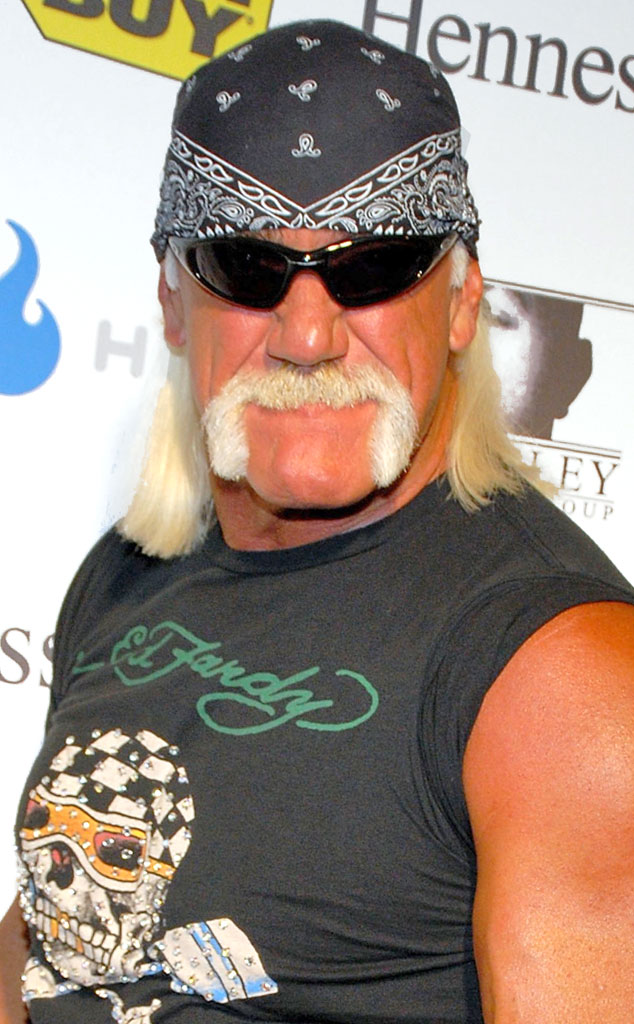
Paul Hawthorne/Getty Images
On one hand there are the physical injuries and the destructive lengths many wrestlers have gone to in order to tough them out, with some falling into addictive spirals that they didn’t survive. In recent years, there has been a concerted effort to talk more about mental health on its own, depression not being a condition that discriminates between the successful and the struggling, though it can certainly be exacerbated by physical pain.
Hulk Hogan opened up in 2009 about sinking into depression after his marriage imploded—and that one night, numbed from mixing rum and Xanax, he put a gun to his head, only to get a phone call right then from boxer Laila Ali, who he starred with on a revival of American Gladiators.
“She called with no agenda, just to say hi and check on me,” Hogan recalled on Today. “It snapped me out of it. At that moment I switched gears. I got sick and tired of being sick and tired. Her voice saved my life, it really did.”
“Struggle and pain is real. I was devastated and depressed,” Dwayne Jonson told the U.K.’s Daily Express in 2018. “I reached a point where I didn’t want to do a thing or go anywhere. I was crying constantly.” His mother had been suicidal too and he recalled watching her try to walk into oncoming traffic when he was 15.
His worst time, he recalled, came before he conquered the wrestling world, but it opened his eyes to the struggles of others, in all arenas.
“We both healed but we’ve always got to do our best to pay attention when other people are in pain,” he said. “We have to help them through it and remind them they are not alone.”
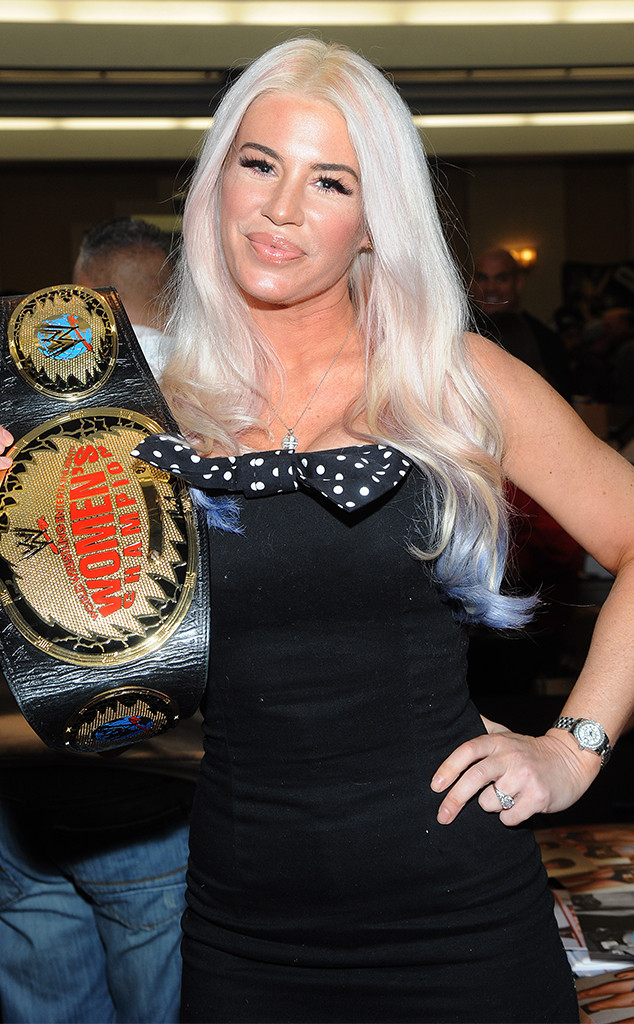
Mediapunch/REX/Shutterstock
“It’s May. It’s Mental Health Month … if you’re depressed and things aren’t going your way, there’s no reason to feel alone,” wrestler and MMA fighter CM Punk said on Atlantic City’s WMGM-FM while talking about Ashley Massaro, a former WWE star who died in an apparent suicide last week. “Just reach out to somebody. Text a friend. Call somebody. There’s hotlines. There’s ways you can get help.”
The WWE honored Massaro during its May 19 Money in the Bank PPV event. She had won the 2005 Diva Search and was with the WWE until 2008. She also competed on Survivor: China in 2007. Sources told TMZ Sports that she hanged herself in her home in New York’s Suffolk County and was pronounced dead at a nearby hospital. She’s survived by an 18-year-old daughter.
Massaro was one of 60 former pro wrestlers who sued the WWE in 2016, alleging the organization failed to protect them from concussions and other repetitive head trauma, charges the WWE denied. Per NBC News, a federal judge dismissed the suit last September, calling some of the claims frivolous and saying others were filed beyond the statute of limitations; she also ordered the plaintiffs’ attorney, Konstantine Kyros, to pay the WWE’s legal fees.
The list of plaintiffs also included Jimmy “Superfly” Snuka, Joseph “Road Warrior Animal” Laurinaitis, Paul “Mr. Wonderful” Orndorff, Chris “King Kong Bundy” Pallies and Harry Masayoshi Fujiwara, known as “Mr. Fuji.”
Fujiwara died in 2016 at 82. Snuka died in 2017 at 73. Both were later found to have had CTE. Snuka had been indicted on third-degree murder and manslaughter charges in 2015 for the 1983 death of his girlfriend but was found unfit to stand trial after being diagnosed with dementia. Bundy died in March at 61.
“I stand for professional wrestlers who face the prospect of losing their identity and consciousness to the effects of a latent occupational disease that robs them of their sanity, comfort of their families and memories of everything they achieved entertaining the millions of people who love them,” Kyros, who has also represented NFL players in similar lawsuits, wrote to the Associated Press at the time.
Kyros also released an affidavit after she died that revealed a claim that Massaro had alleged she was sexually assaulted during a goodwill trip to Kuwait and was told by higher-ups at the WWE not to report it. The WWE fired back that Kyros was exploiting her death—and that Massaro had later apologized for being involved with the lawsuit.
“WWE is saddened by the death of Ashley Massaro, and we reiterate our condolences to her family,” read the statement obtained by Wrestling Observer Figure Four. “However, we regret that her attorney Konstantine Kyros, who filed multiple cases against WWE, lost all of them, and was sanctioned multiple times by the Court for repeated misconduct and false allegations, is using Ashley’s death to further his malicious campaign against WWE by releasing an affidavit that she submitted to the Court and later apologized to WWE for being involved with, so we wish to make certain things crystal clear.”
If Massaro had ever told them she had been assaulted, “we would have reported it immediately to the Base Commander. At no time was there ever a meeting with Vince McMahon, Kevin Dunn, John Laurinatitis or other company executives in which she told them of such a claim and was instructed to keep it quiet.”

Matt Roberts/ZUMA Wire/ZUMAPRESS.com
Meanwhile, all the modern wellness initiatives in the world may not have come around in time to help some of wrestling’s elder statesmen, guys whose primes came in the days of less oversight and less awareness, such as James “Ultimate Warrior” Hellwig, who died of a heart attack at 54 in 2014 just three days after being inducted into the WWE Hall of Fame. He had also signed a multiyear deal to be a WWE ambassador after an almost two-decade estrangement from the company.
“No WWE talent becomes a legend on their own,” Hellwig told a Monday Night Raw crowd on April 7, the night before he died. “Every man’s heart one day beats its final beat. His lungs breathe their final breath. And if what that man did in his life makes the blood pulse through the body of others and makes them believe deeper in something that’s larger than life, then his essence, his spirit, will be immortalized by the storytellers—by the loyalty, by the memory of those who honor him, and make the running the man did live forever.”
The wrestling world and beyond was soon devastated by the 2015 death of “Rowdy” Roddy Piper, whose star had transcended outside the ring thanks to numerous TV and movie cameos.
On HBO’s Real Sports in 2003, Piper name-checked an assortment of drugs he’d abused throughout his career, prescription and illegal. “You get this going and then you start drinking alcohol,” he said. “Deadly combination. You bring cocaine into the picture.” He sniffed. “‘Does a line, it’s time to fight, no downers there. You know, let’s go—but it would be nice to have a little painkiller in you as you go in, or a lot. And whoom, so now you come out of the ring, it’s 10:30 and you’re high! How are ya?!'”
Piper had soured on the business of wrestling by then, but he returned to it just the same.
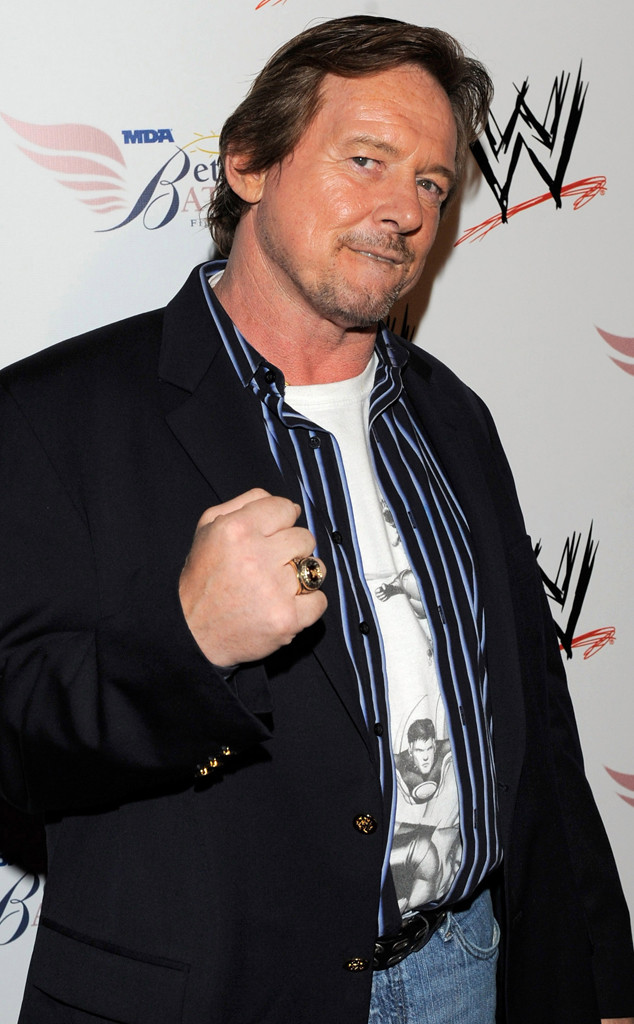
Todd Williamson/WireImage
“What would you have me do at 49?” he asked rhetorically. When my pension plan I can’t take out till I’m 65? I’m not going to make 65. Let’s just face facts, guys.”
He was 61 when he died in his sleep due to cardiopulmonary arrest cacsued by hypertension. His death certificate listed a pulmonary embolism as a contributing factor.
“I actually got a chance to sit down and talk to him for a couple hours before this fight,” Ronda Rousey, who used the nickname “Rowdy” with Piper’s blessing, said on Fox Sports 1 after UFC 190, recalling how she visited Piper at home a few weeks before he died. “I didn’t have time for anything, but I was like, ‘No, I have to go see Roddy. I have to go to Piper’s Pit.’ We talked for hours. I even told him, I promised I’m gonna do the name proud, ‘I’m gonna do you proud, I’m gonna go beat this chick.’ I told him that.
And she did.
Also among the household names that wrestling has produced was Randy “Macho Man” Savage, who died in 2011 after crashing his car into a tree. It turned out that the 58-year-old had suffered a heart attack behind the wheel and lost control of the vehicle.
Official cause of death was artherosclerotic heart disease.
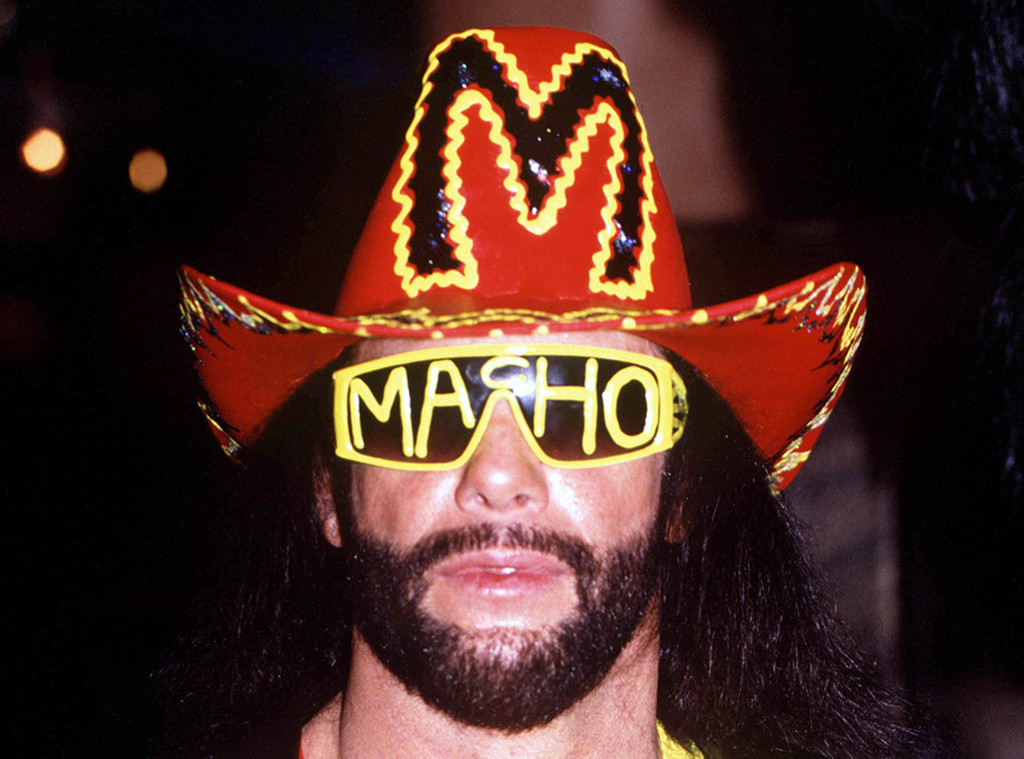
Russell Turiak/Getty Images
“He had so much life in his eyes & in his spirit, I just pray that he’s happy and in a better place and we miss him,” Hulk Hogan tweeted after hearing the news, one of countless members of the wrestling community to pay respects. “I’m completely devastated, after over 10 years of not talking with Randy, we’ve finally started to talk and communicate.”
Savage (real name Randall Mario Poffo), plagued by the lingering pain caused by slamming into a mat thousands of times, had retreated from the wrestling world in the last years of his life, but was said to be making the most of retirement.
“He worked on his house, he was busy with his animals, he married again, and he took us to our doctor’s appointments—things he missed all those years when he was wrestling,” Randy’s mother, Judy, told Bleacher Report after he died. He too had followed his father, Angelo Poffo, into the wrestling business.
Savage’s first wife was famed wrestling manager “Miss Elizabeth” Hulette, and they were a superstar couple but split bitterly in 1992. Elizabeth died of a toxic mix of painkillers and vodka in 2003; she was 42. (She and Hogan’s wife were dear friends, which factored into Savage and Hogan’s eventual estrangement.)
2018 saw the deaths of multiple older members of the wrestling community. Leon Allen White, known as “Vader,” had quit drinking after being alcoholism for years but was plagued by health troubles. He said in 2017, after being diagnosed with congestive heart failure, that he wanted to die in the ring. He underwent two heart surgeries in 2018 and then died on June 18 after spending a month in the hospital with pneumonia. He was 63.
On Aug. 13, Jim “The Anvil” Neidhart, 63, suffered what appeared to be a seizure and fell, fatally injuring himself. He had been diagnosed with early onset Alzheimer’s. Thomas Billington, the “Dynamite Kid,” lost the use of his left leg 20 years ago, had suffered a stroke in 2013 and had heart trouble; he was 60 when he died in December.
Also last year, Brian Christopher Lawler—who once formed the champion WWF tag team “Too Cool” with Scotty 2 Hotty and Rikishi—hanged himself in a small-town Tennessee jail cell on July 28. He had been arrested for DUI on July 7—his third DUI overall—and evading arrest, and his father, pro wrestler Jerry Lawler, had been working on getting him into rehab. Brian was airlifted to a trauma center in Memphis and put on life support, but was declared brain dead on July 29.
“This is from the last time that the three of us were in the ring together,” Scott Garland (Scotty 2 Hotty) wrote on Instagram in tribute. “Brian and I were different people outside of the ring. We never traveled together, never roomed together, and never really hung out together. But, EVERY single time that we went through that curtain, we made magic together. Magic that will never be replaced. We were TOO COOL. I will miss ya BC.”
Solofa Fatu Jr. (Rikishi) wrote, “Brian’s living spirit was always his passion for adventure and love for the wrestling business!! What I will carry with me most is the Grandmasta’s infectious smile and wicked laugh but most of all is his passion to entertain each & every person he ever came in contact with.My condolences and respect goes out to King @realjerrylawler brother Kevin Lawler and the entire family. I’m sry for our loss ??”
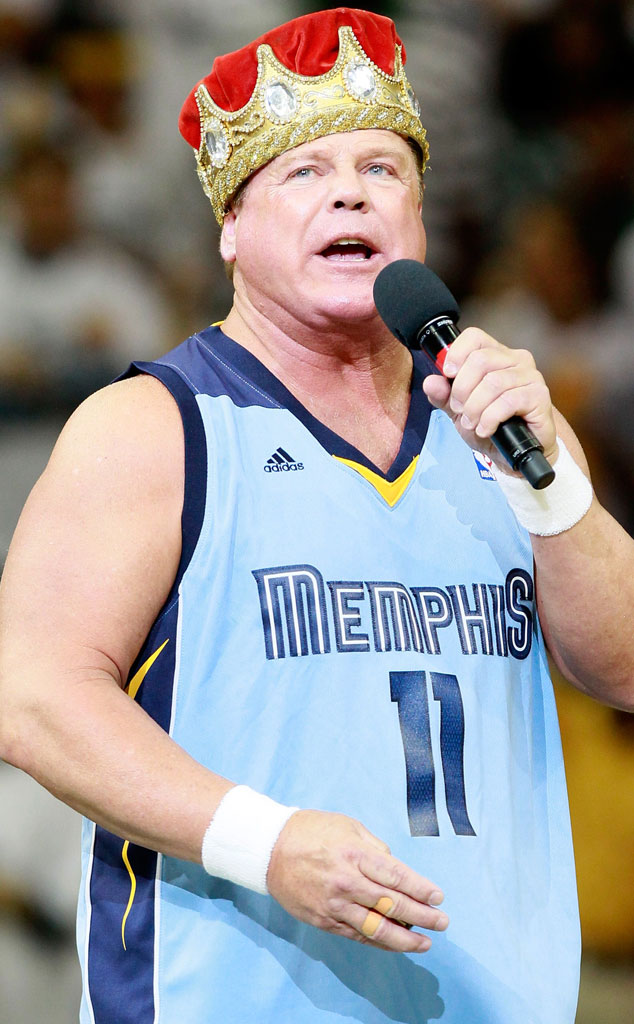
Kevin C. Cox/Getty Images
A week later, Jerry Lawler said on his and Glenn Moore’s podcast, Dinner With the King, that he was living a nightmare—and was still processing what went wrong.
The Hardeman County sheriff had told him, “‘He said, ‘Jerry, my jail is going to be the best place for Brian for the next few weeks. He said, ‘I’ll personally keep an eye on him and he’ll be safe here.'”
But no matter what happened, it didn’t change the fact that his son was gone.
“You know if you got a kid, tell them you love them, because I didn’t do that enough with Brian,” Jerry said.
Jeff Jarrett, who won numerous titles and was inducted into the WWE Hall of Fame last year, paid tribute to Lawler’s skill and charisma and wrote on Instagram that, during the three years they worked together, Lawler had made him a better wrestler.
Jarrett, who spent time in rehab in 2017, also acknowledged the very real problem his fellow wrestler had suffered from.
“Over the years the Brian I, and so many more, knew became covered up in ‘life’…
The disease of addiction is real, it’s very dark, and it’s fatal if left untreated. Brian, love ya and I will miss you my friend.”
A happier ending isn’t impossible, though.
Jake “The Snake” Roberts beat cancer in 2014 and fellow wrestler Diamond Dallas Page set up an Indiegogo page to crowdfund his former mentor’s $9,000 shoulder surgery.
“I had life, but I poisoned it,” Roberts said in 2016’s The Resurrection of Jake the Snake, which chronicled his journey with Page. (He had called the 1999 documentary Beyond the Mat, which focused on him, Mick Foley and Terry Funk, a hurtful pack of lies, but apparently the behind-the-scenes look at him was only the tip of the iceberg.)
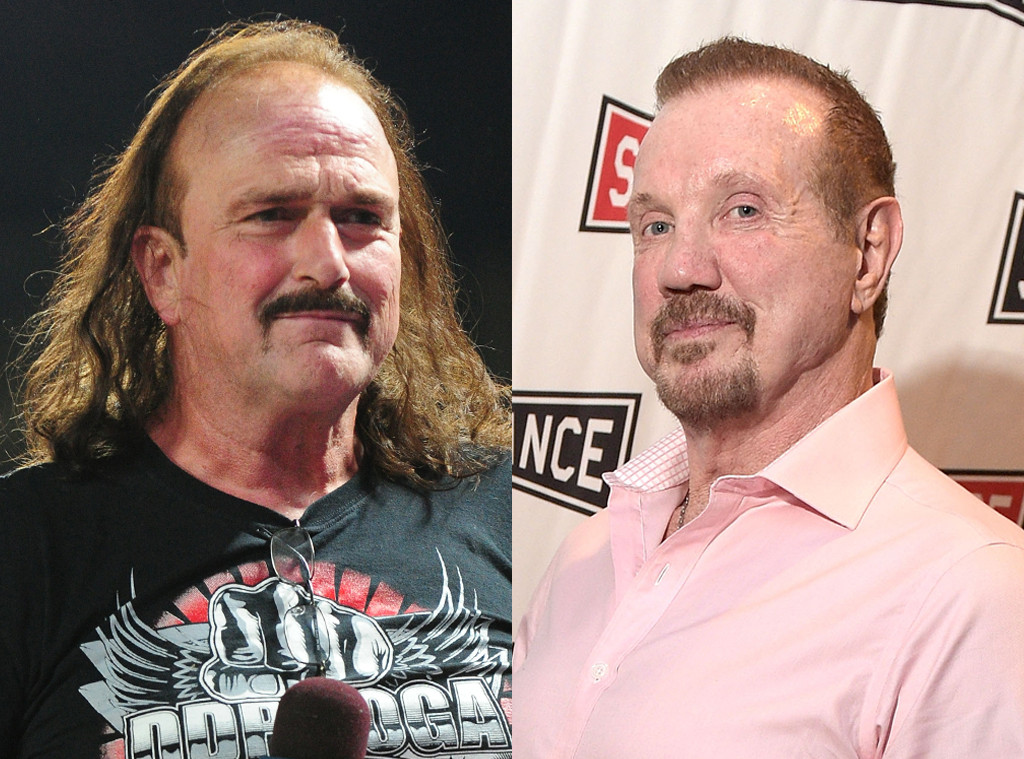
Scott Cunningham/Getty Images, Jason Kempin/Getty Images
Three trips to rehab at the behest of the WWE hadn’t helped and he had lost his family. But then Page, who had helped manage his own chronic pain from wrestling with yoga, stepped in to help—with Roberts’ sobriety, his weight, his state of mind, everything.
“Everyone thought I was nuts,” Page told Bleacher Report.
After an interminable series of progress beset by relapses, it was the compassion (and money) that poured in when Page set up the Indiegogo fund that finally helped get Roberts over the hump, when he realized how much people in the wrestling community still cared about him. Asking for $9,000, they raised almost $30,000.
There were relapses after the 2016 film’s happy ending, which showed Roberts being inducted into the WWE Hall of Fame in 2014. But Roberts had re-emerged into his community and was no longer living as if he no longer cared about living.
“I’m just out there now trying to enjoy myself,” the now 63-year-old star told the Asbury Park Press last year ahead of 80s Wrestling Con, where he was a guest of honor. “I’ve had these shows and I talk to people, visit with them, take some pictures, and find out where they were at during that time in their life, who they were going to see wrestling. I love hearing those stories, man. It makes me feel pretty good, makes me feel like I didn’t waste all that time back in the day.”
Be the first to comment